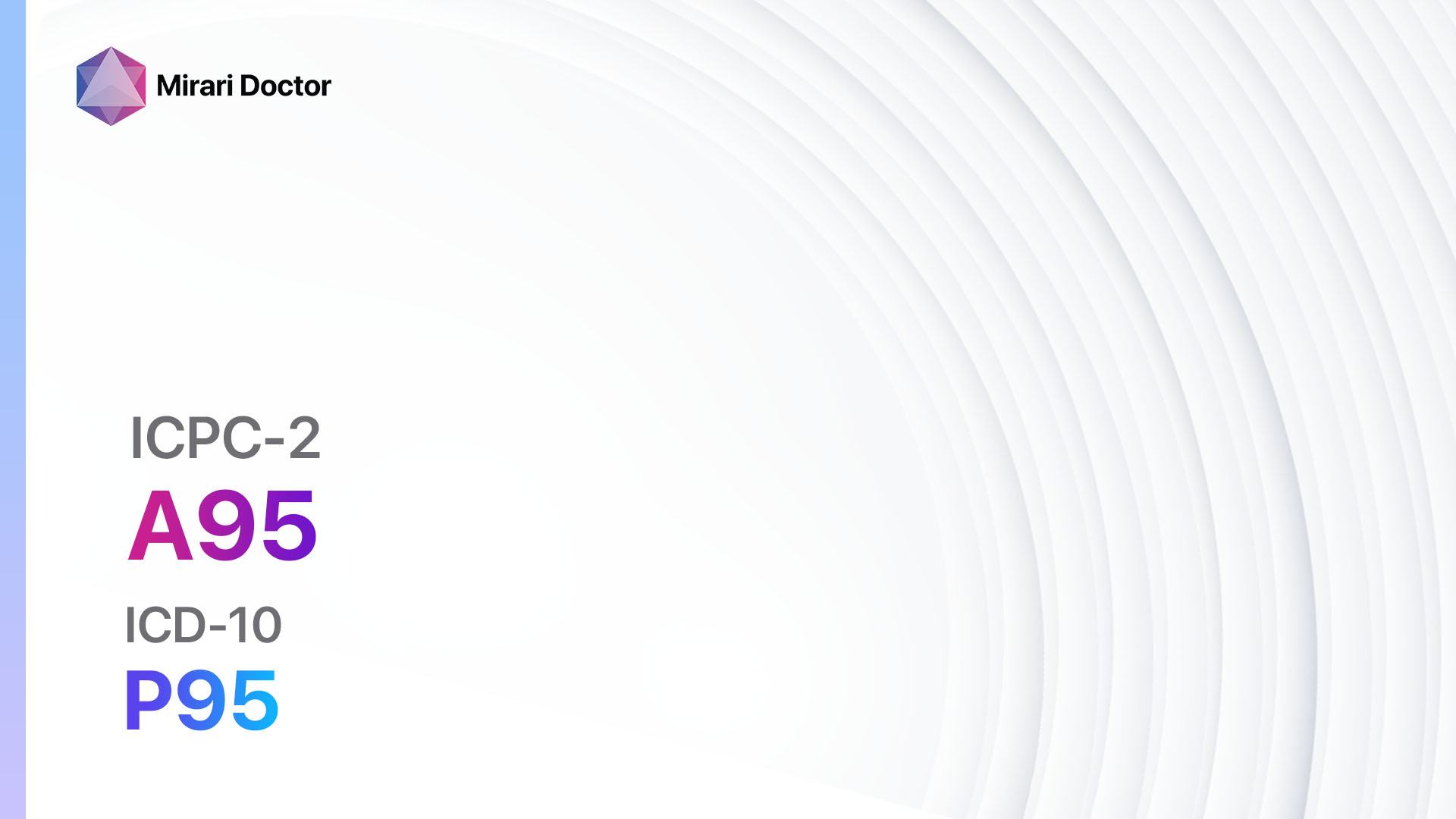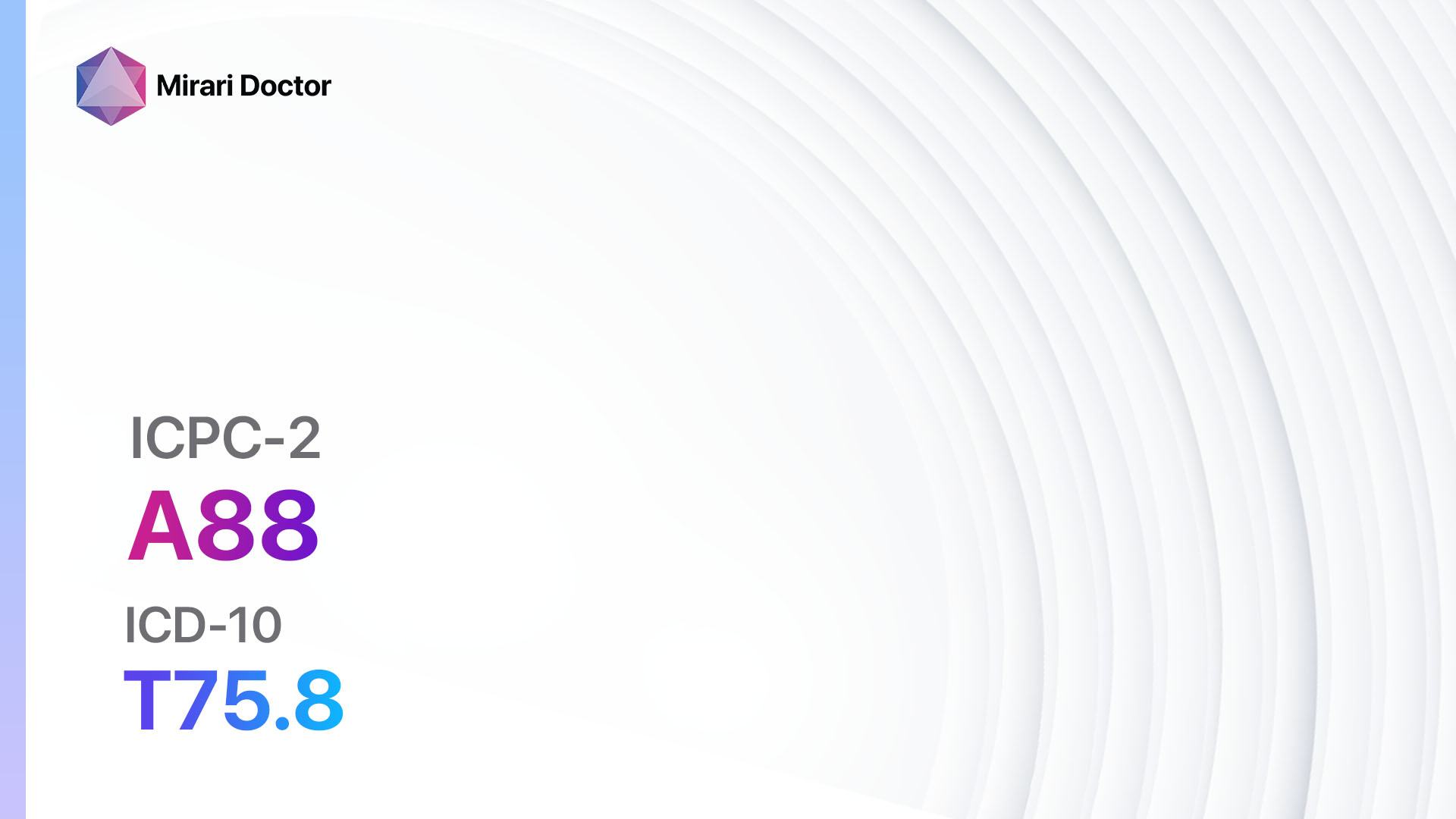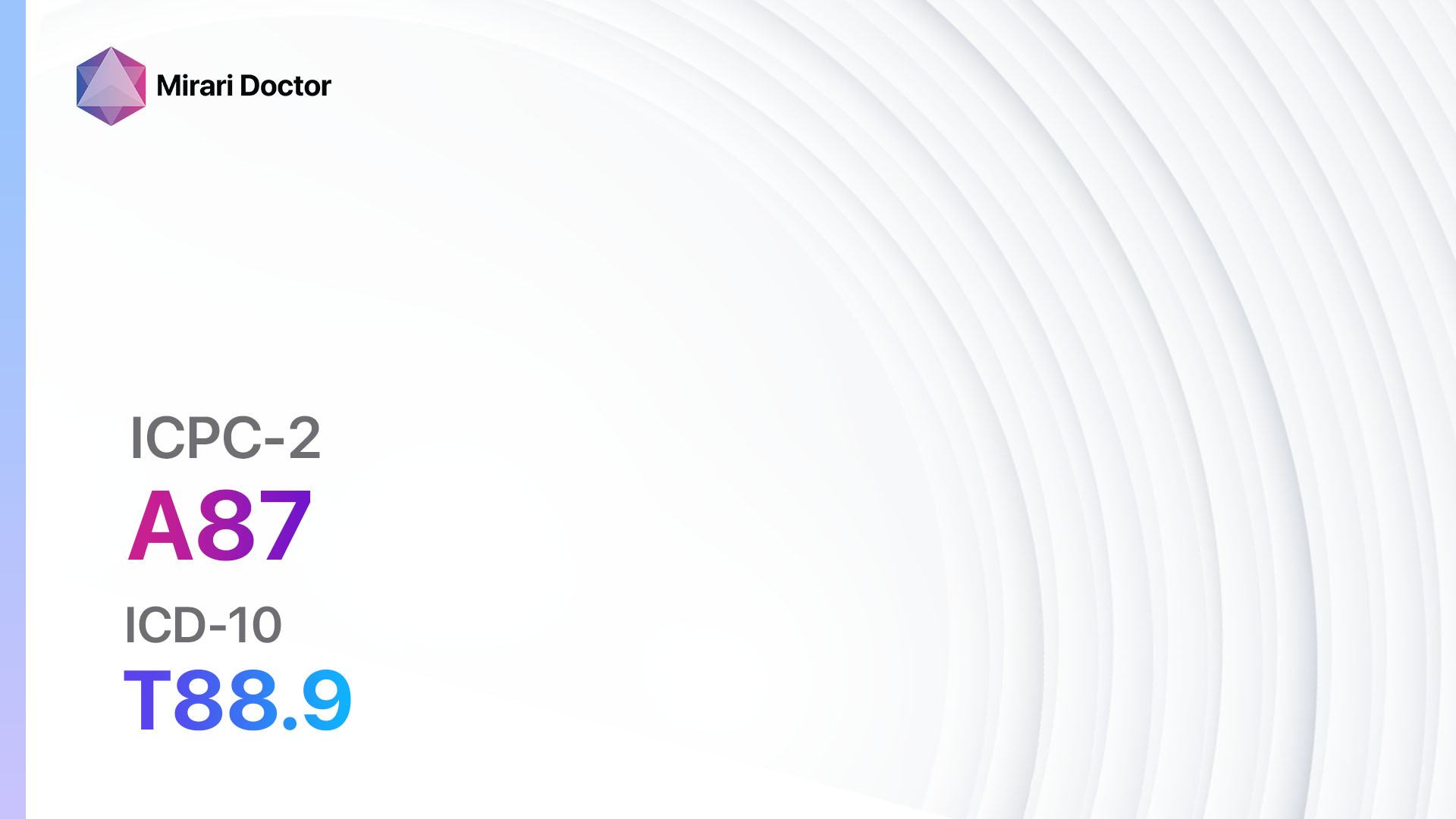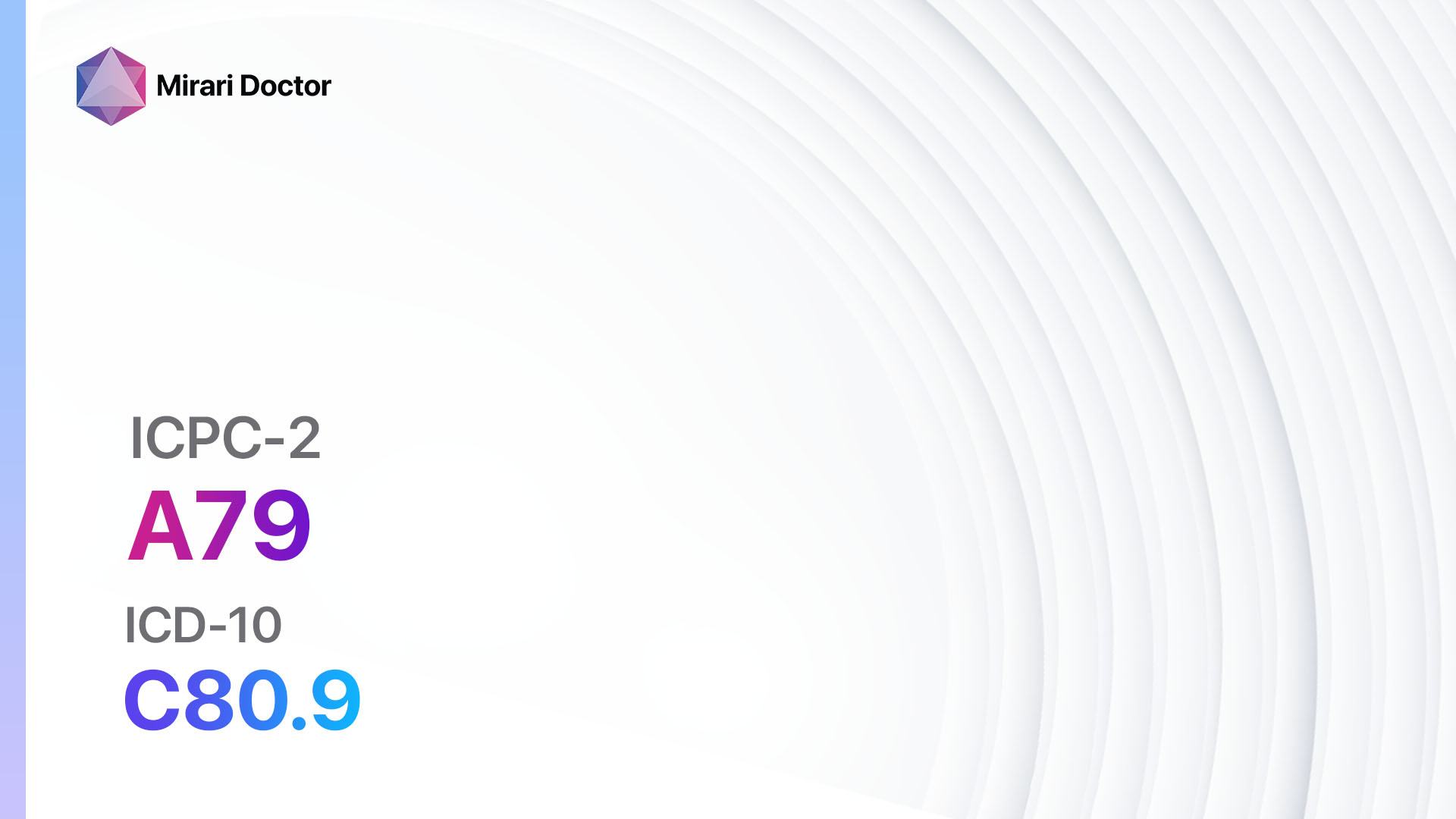
Introduction
Adverse effects of medical agents refer to the unintended and harmful effects that can occur as a result of taking medications or undergoing medical treatments[1]. These adverse effects can range from mild to severe and can vary depending on the specific medication or treatment[2]. The aim of this guide is to provide healthcare professionals with a comprehensive overview of the symptoms, causes, diagnostic steps, possible interventions, and patient education related to adverse effects of medical agents.
Codes
- ICPC-2 Code: A85 Adverse effect medical agent[3]
- ICD-10 Code: T88.7 Unspecified adverse effect of drug or medicament[4]
Symptoms
- Nausea: A feeling of discomfort in the stomach that may be accompanied by the urge to vomit[5].
- Headache: A pain or discomfort in the head, scalp, or neck[5].
- Fatigue: A feeling of tiredness or lack of energy[5].
- Dizziness: A sensation of spinning or lightheadedness[5].
- Rash: A change in the skin’s color, appearance, or texture[5].
Causes
- Allergic reactions: Some individuals may have an allergic reaction to certain medications or treatments, resulting in adverse effects[6].
- Drug interactions: Certain medications may interact with each other, leading to adverse effects[6].
- Overdose: Taking more than the recommended dose of a medication can cause adverse effects[6].
- Individual sensitivity: Some individuals may be more sensitive to certain medications or treatments, making them more prone to experiencing adverse effects[6].
Diagnostic Steps
Medical History
- Gather information about the patient’s current medications, including prescription drugs, over-the-counter medications, and herbal supplements[7].
- Ask about any previous adverse reactions to medications or treatments[7].
- Inquire about any known allergies or sensitivities[7].
- Assess the patient’s medical conditions, as certain conditions may increase the risk of adverse effects[7].
Physical Examination
- Perform a thorough physical examination to assess the patient’s overall health and identify any signs or findings that may be indicative of adverse effects[8].
- Pay attention to vital signs, such as blood pressure, heart rate, and temperature[8].
- Examine the skin for any rashes or other abnormalities[8].
- Evaluate the patient’s neurological status, including coordination and balance[8].
Laboratory Tests
- Complete blood count (CBC): This test can help identify any abnormalities in the blood, such as anemia or infection[9].
- Liver function tests: These tests assess the functioning of the liver and can detect any liver damage or dysfunction[9].
- Kidney function tests: These tests evaluate the kidneys’ ability to filter waste products from the blood and can detect any kidney problems[9].
- Allergy testing: In cases where an allergic reaction is suspected, allergy testing may be performed to identify the specific allergen[9].
Diagnostic Imaging
- X-rays: X-rays can be used to visualize certain structures, such as bones, and identify any abnormalities or injuries[10].
- Ultrasound: Ultrasound uses sound waves to create images of internal organs and can help identify any abnormalities or changes[10].
- CT scans: CT scans provide detailed cross-sectional images of the body and can help detect any structural abnormalities or tumors[10].
- MRI: MRI uses magnetic fields and radio waves to create detailed images of the body’s organs and tissues, allowing for the detection of abnormalities[10].
Other Tests
- ECG: An electrocardiogram measures the electrical activity of the heart and can help identify any abnormalities or irregularities.
- Drug level monitoring: In cases where the adverse effect is related to medication, monitoring the drug levels in the blood can help determine if the dose needs to be adjusted.
- Biopsy: A biopsy involves the removal of a small sample of tissue for examination under a microscope and can help diagnose certain conditions or identify the cause of adverse effects.
Follow-up and Patient Education
- Schedule follow-up appointments to monitor the patient’s progress and assess the resolution of adverse effects.
- Provide patient education regarding the specific adverse effect experienced, including its potential causes, management strategies, and when to seek medical attention.
- Emphasize the importance of reporting any new or worsening symptoms to their healthcare provider.
Possible Interventions
Traditional Interventions
Medications:
Top 5 drugs for Adverse effect medical agent:
- Antihistamines (e.g., Diphenhydramine, Loratadine):
- Cost: Generic versions can be $3-$20/month.
- Contraindications: Glaucoma, urinary retention.
- Side effects: Drowsiness, dry mouth.
- Severe side effects: Seizures, irregular heartbeat.
- Drug interactions: Sedatives, alcohol.
- Warning: May cause drowsiness, avoid driving or operating machinery.
- Corticosteroids (e.g., Prednisone, Dexamethasone):
- Cost: Generic versions can be $4-$30/month.
- Contraindications: Active infections, systemic fungal infections.
- Side effects: Increased appetite, weight gain.
- Severe side effects: Adrenal suppression, osteoporosis.
- Drug interactions: Nonsteroidal anti-inflammatory drugs (NSAIDs), anticoagulants.
- Warning: Long-term use may require gradual tapering to avoid adrenal insufficiency.
- Anti-emetics (e.g., Ondansetron, Metoclopramide):
- Cost: Generic versions can be $5-$30/month.
- Contraindications: Bowel obstruction, Parkinson’s disease.
- Side effects: Headache, constipation.
- Severe side effects: Torsades de pointes (a type of irregular heartbeat), neuroleptic malignant syndrome.
- Drug interactions: Serotonin reuptake inhibitors (SSRIs), tramadol.
- Warning: May cause drowsiness, avoid driving or operating machinery.
- Analgesics (e.g., Acetaminophen, Ibuprofen):
- Cost: Generic versions can be $3-$20/month.
- Contraindications: Severe liver disease, active peptic ulcer disease.
- Side effects: Upset stomach, dizziness.
- Severe side effects: Liver failure, gastrointestinal bleeding.
- Drug interactions: Warfarin, aspirin.
- Warning: Avoid alcohol consumption, as it may increase the risk of liver damage.
- Antidiarrheals (e.g., Loperamide, Bismuth subsalicylate):
- Cost: Generic versions can be $3-$20/month.
- Contraindications: Severe abdominal pain, bloody stools.
- Side effects: Constipation, drowsiness.
- Severe side effects: Toxic megacolon (a life-threatening condition), Reye’s syndrome (in children).
- Drug interactions: Opioids, antacids.
- Warning: Do not use in cases of bacterial or parasitic infections.
Alternative Drugs:
- Proton pump inhibitors (e.g., Omeprazole): Used to reduce stomach acid production and treat gastrointestinal adverse effects. Cost: $10-$50/month.
- Antidepressants (e.g., Sertraline, Escitalopram): Can be used to manage certain adverse effects, such as anxiety or depression. Cost: $10-$50/month.
- Antiemetic patches (e.g., Scopolamine): Transdermal patches that can help prevent nausea and vomiting. Cost: $10-$50/patch.
- Laxatives (e.g., Polyethylene glycol, Senna): Used to relieve constipation caused by certain medications. Cost: $5-$20/month.
- Antihypertensive medications (e.g., Amlodipine, Lisinopril): May be prescribed to manage elevated blood pressure caused by certain medications. Cost: $10-$50/month.
Surgical Procedures:
- In cases where the adverse effect is severe or life-threatening, surgical intervention may be necessary. The specific procedure will depend on the nature and location of the adverse effect. Costs can vary significantly depending on the procedure and healthcare facility.
Alternative Interventions
- Acupuncture: May help alleviate certain adverse effects, such as pain or nausea. Cost: $60-$120 per session.
- Chelation therapy: Controversial treatment involving the administration of chelating agents to remove heavy metals from the body. Cost: $75-$150 per session.
- Herbal supplements: Some herbal supplements, such as ginger or peppermint, may help alleviate certain adverse effects, such as nausea or indigestion. Cost: Varies depending on the specific supplement.
- Mind-body techniques: Practices such as meditation, yoga, or deep breathing exercises may help manage stress and improve overall well-being. Cost: Varies depending on the specific practice or class.
- Physical therapy: Can be beneficial for managing musculoskeletal adverse effects, such as pain or limited mobility. Cost: $50-$150 per session.
Lifestyle Interventions
- Dietary modifications: Making changes to the diet, such as avoiding trigger foods or increasing fiber intake, may help manage certain adverse effects, such as gastrointestinal symptoms. Cost: Varies depending on individual food choices.
- Exercise: Regular physical activity can help improve overall health and well-being, potentially reducing the severity of certain adverse effects. Cost: Varies depending on individual preferences (e.g., gym membership, home exercise equipment).
- Stress management: Techniques such as relaxation exercises, mindfulness, or therapy can help manage stress and its impact on adverse effects. Cost: Varies depending on the specific approach or therapy.
- Sleep hygiene: Establishing good sleep habits, such as maintaining a consistent sleep schedule and creating a relaxing bedtime routine, may help improve sleep quality and manage adverse effects related to sleep disturbances. Cost: Varies depending on individual preferences (e.g., bedding, sleep aids).
- Support groups: Joining a support group or seeking social support can provide emotional support and practical tips for managing adverse effects. Cost: Varies depending on the specific group or organization.
It is important to note that the cost ranges provided are approximate and may vary depending on the location and availability of the interventions. It is recommended to consult with healthcare professionals or insurance providers for accurate cost information.
Mirari Cold Plasma Alternative Intervention
Understanding Mirari Cold Plasma
- Safe and Non-Invasive Treatment: Mirari Cold Plasma is a safe and non-invasive treatment option for various skin conditions. It does not require incisions, minimizing the risk of scarring, bleeding, or tissue damage.
- Efficient Extraction of Foreign Bodies: Mirari Cold Plasma facilitates the removal of foreign bodies from the skin by degrading and dissociating organic matter, allowing easier access and extraction.
- Pain Reduction and Comfort: Mirari Cold Plasma has a local analgesic effect, providing pain relief during the treatment, making it more comfortable for the patient.
- Reduced Risk of Infection: Mirari Cold Plasma has antimicrobial properties, effectively killing bacteria and reducing the risk of infection.
- Accelerated Healing and Minimal Scarring: Mirari Cold Plasma stimulates wound healing and tissue regeneration, reducing healing time and minimizing the formation of scars.
Mirari Cold Plasma Prescription
Video instructions for using Mirari Cold Plasma Device – A85 Adverse effect medical agent (ICD-10:T88.7)
| Mild | Moderate | Severe |
| Mode setting: 1 (Infection) Location: 0 (Localized) Morning: 15 minutes, Evening: 15 minutes |
Mode setting: 1 (Infection) Location: 0 (Localized) Morning: 30 minutes, Lunch: 30 minutes, Evening: 30 minutes |
Mode setting: 1 (Infection) Location: 0 (Localized) Morning: 30 minutes, Lunch: 30 minutes, Evening: 30 minutes |
| Mode setting: 2 (Wound Healing) Location: 3 (Kidney, Liver & Spleen) Morning: 15 minutes, Evening: 15 minutes |
Mode setting: 2 (Wound Healing) Location: 3 (Kidney, Liver & Spleen) Morning: 30 minutes, Lunch: 30 minutes, Evening: 30 minutes |
Mode setting: 2 (Wound Healing) Location: 3 (Kidney, Liver & Spleen) Morning: 30 minutes, Lunch: 30 minutes, Evening: 30 minutes |
| Mode setting: 7 (Immunotherapy) Location: 1 (Sacrum) Morning: 15 minutes, Evening: 15 minutes |
Mode setting: 7 (Immunotherapy) Location: 1 (Sacrum) Morning: 30 minutes, Lunch: 30 minutes, Evening: 30 minutes |
Mode setting: 7 (Immunotherapy) Location: 1 (Sacrum) Morning: 30 minutes, Lunch: 30 minutes, Evening: 30 minutes |
| Total Morning: 45 minutes approx. $7.50 USD, Evening: 45 minutes approx. $7.50 USD |
Total Morning: 90 minutes approx. $15 USD, Lunch: 90 minutes approx. $15 USD, Evening: 90 minutes approx. $15 USD, |
Total Morning: 90 minutes approx. $15 USD, Lunch: 90 minutes approx. $15 USD, Evening: 90 minutes approx. $15 USD, |
| Usual treatment for 7-60 days approx. $105 USD – $900 USD | Usual treatment for 6-8 weeks approx. $1,890 USD – $2,520 USD |
Usual treatment for 3-6 months approx. $4,050 USD – $8,100 USD
|
 |
|
Use the Mirari Cold Plasma device to treat Adverse effect medical agent effectively.
WARNING: MIRARI COLD PLASMA IS DESIGNED FOR THE HUMAN BODY WITHOUT ANY ARTIFICIAL OR THIRD PARTY PRODUCTS. USE OF OTHER PRODUCTS IN COMBINATION WITH MIRARI COLD PLASMA MAY CAUSE UNPREDICTABLE EFFECTS, HARM OR INJURY. PLEASE CONSULT A MEDICAL PROFESSIONAL BEFORE COMBINING ANY OTHER PRODUCTS WITH USE OF MIRARI.
Step 1: Cleanse the Skin
- Start by cleaning the affected area of the skin with a gentle cleanser or mild soap and water. Gently pat the area dry with a clean towel.
Step 2: Prepare the Mirari Cold Plasma device
- Ensure that the Mirari Cold Plasma device is fully charged or has fresh batteries as per the manufacturer’s instructions. Make sure the device is clean and in good working condition.
- Switch on the Mirari device using the power button or by following the specific instructions provided with the device.
- Some Mirari devices may have adjustable settings for intensity or treatment duration. Follow the manufacturer’s instructions to select the appropriate settings based on your needs and the recommended guidelines.
Step 3: Apply the Device
- Place the Mirari device in direct contact with the affected area of the skin. Gently glide or hold the device over the skin surface, ensuring even coverage of the area experiencing.
- Slowly move the Mirari device in a circular motion or follow a specific pattern as indicated in the user manual. This helps ensure thorough treatment coverage.
Step 4: Monitor and Assess:
- Keep track of your progress and evaluate the effectiveness of the Mirari device in managing your Adverse effect medical agent. If you have any concerns or notice any adverse reactions, consult with your health care professional.
Note
This guide is for informational purposes only and should not replace the advice of a medical professional. Always consult with your healthcare provider or a qualified medical professional for personal advice, diagnosis, or treatment. Do not solely rely on the information presented here for decisions about your health. Use of this information is at your own risk. The authors of this guide, nor any associated entities or platforms, are not responsible for any potential adverse effects or outcomes based on the content.
Mirari Cold Plasma System Disclaimer
- Purpose: The Mirari Cold Plasma System is a Class 2 medical device designed for use by trained healthcare professionals. It is registered for use in Thailand and Vietnam. It is not intended for use outside of these locations.
- Informational Use: The content and information provided with the device are for educational and informational purposes only. They are not a substitute for professional medical advice or care.
- Variable Outcomes: While the device is approved for specific uses, individual outcomes can differ. We do not assert or guarantee specific medical outcomes.
- Consultation: Prior to utilizing the device or making decisions based on its content, it is essential to consult with a Certified Mirari Tele-Therapist and your medical healthcare provider regarding specific protocols.
- Liability: By using this device, users are acknowledging and accepting all potential risks. Neither the manufacturer nor the distributor will be held accountable for any adverse reactions, injuries, or damages stemming from its use.
- Geographical Availability: This device has received approval for designated purposes by the Thai and Vietnam FDA. As of now, outside of Thailand and Vietnam, the Mirari Cold Plasma System is not available for purchase or use.
References
- Edwards, I. R., & Aronson, J. K. (2000). Adverse drug reactions: definitions, diagnosis, and management. The Lancet, 356(9237), 1255-1259.
- Pirmohamed, M., James, S., Meakin, S., Green, C., Scott, A. K., Walley, T. J., … & Breckenridge, A. M. (2004). Adverse drug reactions as cause of admission to hospital: prospective analysis of 18 820 patients. BMJ, 329(7456), 15-19.
- WONCA International Classification Committee. (1998). ICPC-2: International classification of primary care. Oxford University Press, USA.
- World Health Organization. (2015). International statistical classification of diseases and related health problems (10th ed.).
- Schatz, S. N., & Weber, R. J. (2015). Adverse drug reactions. ACCP Updates in Therapeutics, 1-13.
- Riedl, M. A., & Casillas, A. M. (2003). Adverse drug reactions: types and treatment options. American family physician, 68(9), 1781-1790.
- Bickley, L. S. (2017). Bates’ guide to physical examination and history taking (12th ed.). Wolters Kluwer.
- Jarvis, C. (2020). Physical examination and health assessment (8th ed.). Elsevier.
- Pagana, K. D., Pagana, T. J., & Pagana, T. N. (2019). Mosby’s diagnostic and laboratory test reference (14th ed.). Elsevier.
- Eisenberg, R. L. (2019). Clinical imaging: An atlas of differential diagnosis (6th ed.). Wolters Kluwer.
Related articles
Made in USA



























